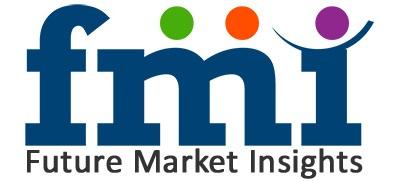Future Market Insights (FMI) in its latest analysis has projected the global educational tourism market to exhibit a year-on-year (YoY) growth of 16.5% in 2021, surpassing a valuation of around US$ 399.8 Billion by 2021 end.
With rapid growth of educational tourism across the globe, the market is set to register an impressive compound annual growth rate (CAGR) of 17.2% between 2021 and 2031, reaching a valuation of around US$ 1,947.0 Billion by 2031 end.
Request a report sample to gain comprehensive insights: https://www.futuremarketinsights.com/reports/sample/rep-gb-13880
Growing awareness among people, rising disposable income, supportive governmental policies, and development of efficient teaching aids, and improving accessibility to various educational courses with scholarships are some of the factors driving the educational tourism market?
Various countries across the world are promoting educational tourism as a part of their strategy to boost the local economy. These host countries benefit from international student expenditures on accommodation, food and beverages, tuition fees, taxes and other leisure activities.
Latest technologies such as artificial intelligence (AI) and virtual reality (AR) are being implemented in teaching and learning processes, which will eventually attract students from around the world.
Educational tourism will not only benefit the host country but will foster personal and professional growth for students allowing them to take advantage of cultural exchange. Key players in the market are introducing attractive packages to woo students. Digital marketing plays a vital role in promoting the services and packages offered by various educational institutions and other companies.
According to FMI, the post graduate segment with over 71% market share will remain the most preferred education type among students. Regionally, North America leads the educational tourism market. The region is expected to account for over 31% of the global market share during the forecast period.
“Growing interest among students to opt for higher education in foreign countries and implementation of favorable policies inviting students from around the world will drive the market swiftly during the forecast period,” says the FMI analyst.
Key Takeaways from Educational Tourism Market Survey
- The U.S. dominates the educational tourism market in North America. This can be attributed to the presence of leading educational institutions and the excellent educational facilities available in the country.
- Owing to the availability of flexible education system, the U.K is emerging as an attractive destination for students.
- Growing interest of foreigners to study Indian culture and the availability of various post-graduation courses with special scholarship programs for foreigners are some of the factors driving the market in India.
- In terms of course type, master’s degree (M.A) remains the most preferred, accounting for around 71% of the global market share.
- Based on age group, 19-25 segment leads the educational tourism market. As per FMI, the segment generates around 73% revenue for global educational tourism market.
Key players:
- Meridean Overseas
- GVI Company
- Global Volunteers
- Capital Tours, Inc.
- EF Educational Tours
- Road Scholar
- AAI Edutourz
- ACIS Educational Tours
- GoIreland
- Qadri International Education Consultancy
- Intelligent Partners
- Futures Abroad
- ProEd DMCC
- Education Resources Network (ERN)
- Education Zone
- Fact
- IQ Education Consultants
- K.H Consultancy Services
- Stratix Consultants
More Insights on the Global Educational Tourism Sales Outlook
FMI provides an unbiased analysis of educational tourism market, presenting historical demand data (2016-2020) and forecast statistics for the period from 2021-2031. The study divulges compelling insights on the global demand for educational tourism with a detailed segmentation on the basis of:
Age Group (% of Demand):
- Less Than 12 Years
- 13-18 Years
- 19-25 Years
- 26-40 Years
- 41-55 Years
Education Type (% of Demand):
- Primary
- Secondary
- College
- Post Graduate
Type of Occupation (% of Demand):
- Students
- Scholar
- Teachers
- Government Officials
- Corporation Managers
- Enterprise Owners
- Workers
- Others
Course Type (% of Demand):
- Master Degree
- Secondary Education
- Primary Education
Region (% of Demand):
- North America
- Latin America
- Europe
- East Asia
- South Asia
- Oceania
- Middle East and Africa (MEA)

